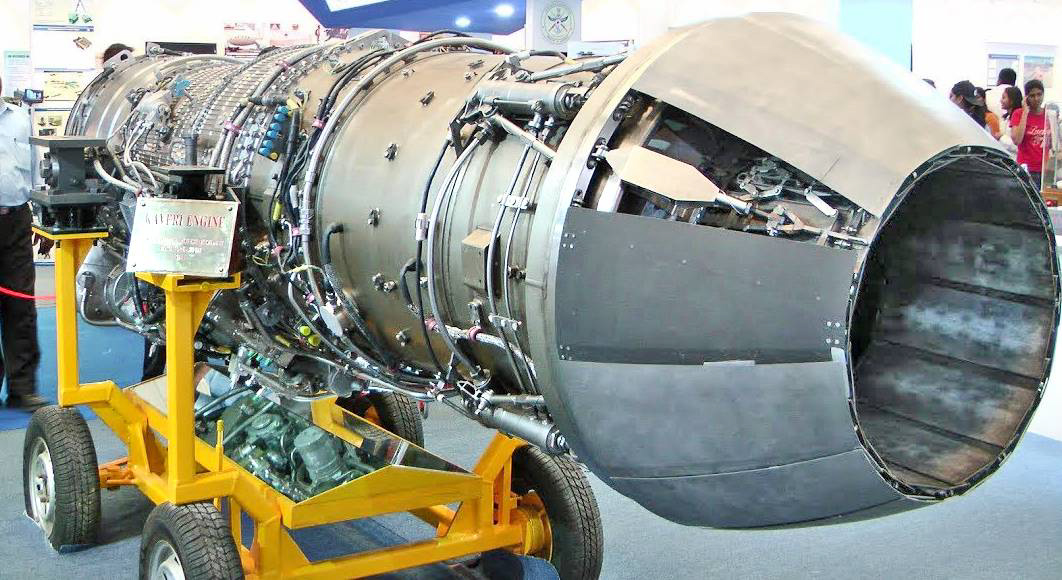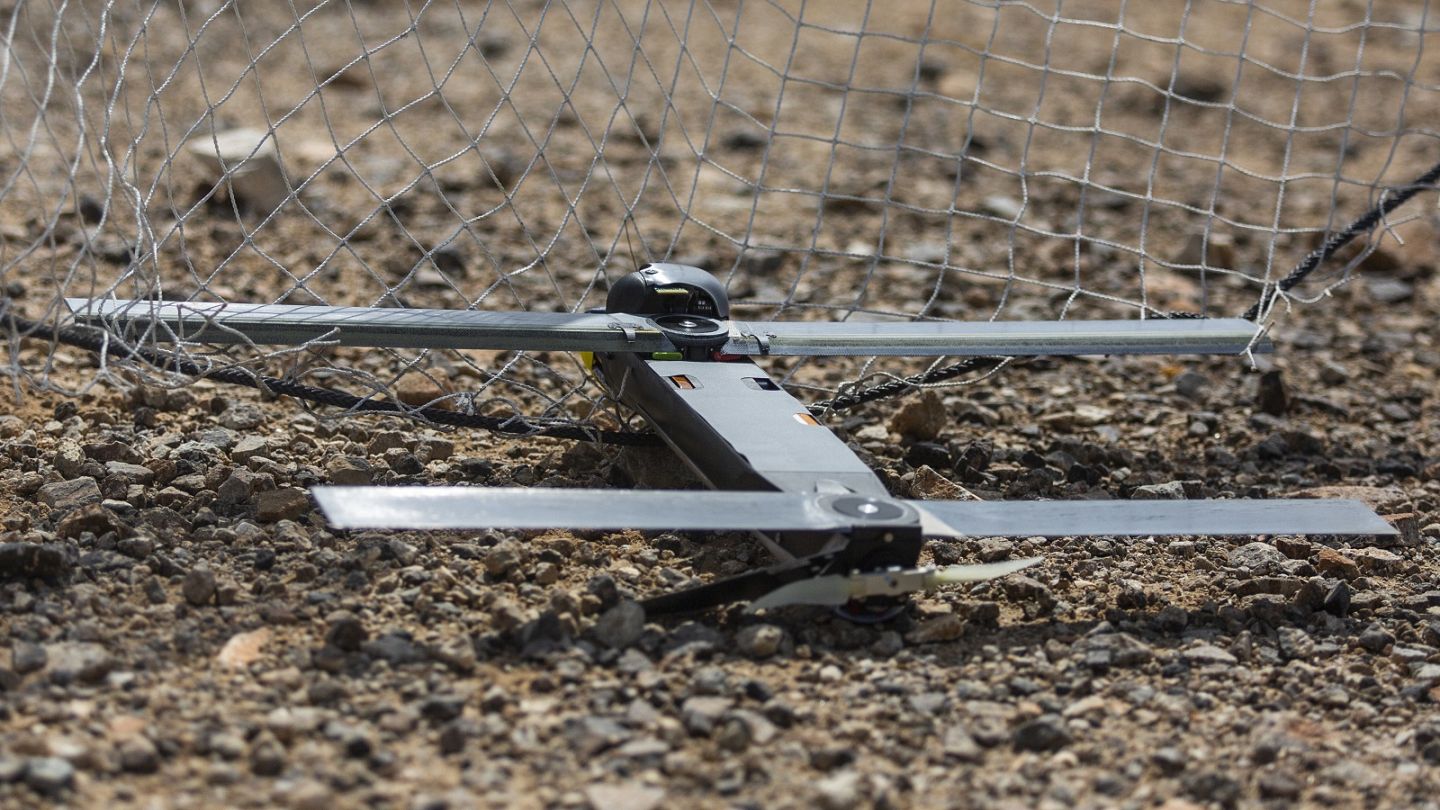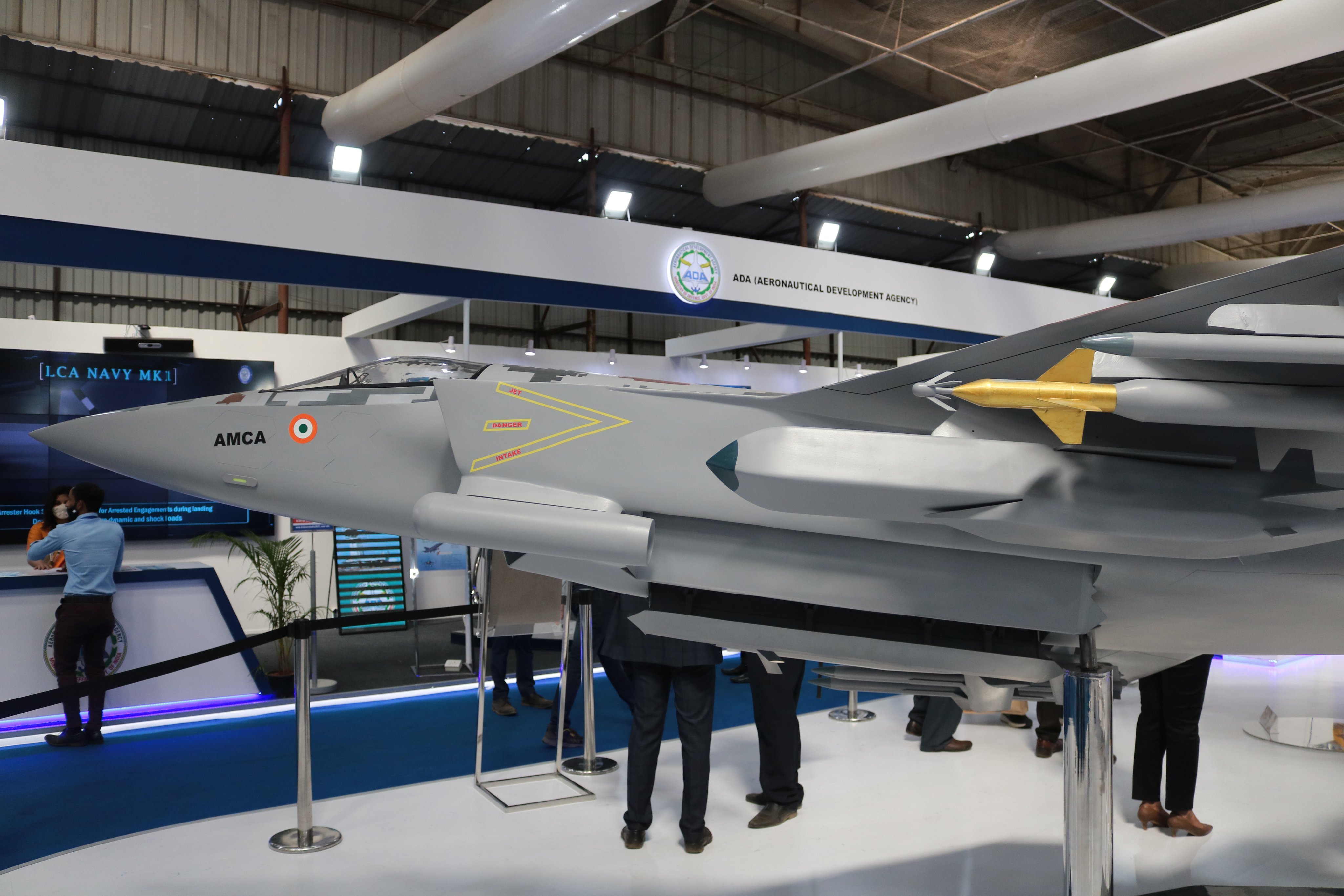Monthly Archives: January 2025
SOURCE: RAUNAK KUNDE / NEWS BEAT / IDRW.ORG


At the Annual Press conference held at the Manekshaw Centre in New Delhi on Monday, General Upendra Dwivedi, the Chief of the Indian Army, made a significant announcement regarding the Army’s artillery modernization efforts.
General Dwivedi revealed that the Indian Army is poised to significantly enhance its firepower with the procurement of the Advanced Towed Artillery Gun System (ATAGS). He stated, “If everything goes as planned, we hope to sign a contract for approximately 307 ATAGS, worth around ?8,000 crore, before the end of this financial year.”
Continue readingSOURCE: AFI


The Gas Turbine Research Establishment (GTRE), a key research organization under the Defence Research and Development Organisation (DRDO), has confirmed significant advancements in its Dry Kaveri Engine, which boasts 75% commonality with the original Kaveri engine. The improvements made in the Dry Kaveri have addressed many of the challenges faced by the Kaveri, ensuring its readiness for future defence applications, including the development of cutting-edge unmanned combat aerial vehicles (UCAVs) for the Indian Air Force (IAF).
One of the key highlights of the Dry Kaveri Engine is the substantial progress made in overcoming the previous limitations faced by the Kaveri engine. GTRE has confirmed that all the major issues of the original Kaveri engine have been rectified in its dry variant, making it a more reliable and efficient propulsion system. Dry Kaveri has been subjected to rigorous testing, and according to GTRE, the engine has performed admirably, showcasing its capability to meet the demanding requirements of future defence platforms.
Continue readingSOURCE: AFI


The latest iteration of the Hindustan Aeronautics Limited (HAL) CATS Warrior, showcased as a full-scale demonstrator, has introduced several significant modifications aimed at enhancing performance and stealth capabilities. These changes reflect HAL’s commitment to advancing India’s indigenous drone technology, particularly for the Indian Air Force’s (IAF) needs.
One of the most apparent alterations in the new CATS Warrior model is the redesign of the air intake. The earlier designs featured a more angular, stealth-focused intake, which has now been replaced with a smoother, curved design. This change appears to slightly compromise the stealth aspect, as the engine might be more visible than in previous models, potentially increasing radar cross-section. However, this redesign is not without its benefits.
Continue readingSOURCE: AFI


In a recent development on social media, particularly on the platform X (formerly Twitter), handles believed to be backed by Pakistan’s Inter-Services Intelligence (ISI) have initiated a misinformation campaign targeting India. Among the claims made by these accounts is a particularly bold assertion that “Bangladesh has reclaimed 1,008 km² of territory occupied by India during recent border clashes.”
This claim, which lacks any substantiation from official sources or independent verification, is part of a broader strategy to spread disinformation and stir up anti-India sentiment. The narrative being pushed suggests a scenario of territorial shifts following supposed border skirmishes, an event that has not been reported or confirmed by any credible news outlet or governmental body from India, Bangladesh, or international observers.
Continue readingSOURCE: AFI


Astr Defence, an emerging name in India’s defense manufacturing sector, has announced that the production of its latest product, the Phantom pistol, is now in full swing. This compact firearm, which comes equipped with an innovative red dot sight, marks a significant step forward in providing Indian civilians with high-quality, home-grown self-defense options.
The Phantom pistol has been designed with both aesthetics and functionality in mind, offering a sleek profile that does not compromise on capacity or accuracy. The inclusion of a factory-calibrated red dot sight is particularly noteworthy as it positions the Phantom as India’s first pistol with such a feature, enhancing shooting precision and reducing the time needed for target acquisition.
Continue readingSOURCE: IDRW.ORG


In a recent statement to idrw.org, Defence Analyst Ranesh Rajan has urged the Indian Air Force (IAF) to pioneer its own definition of what constitutes a sixth-generation fighter jet. Rajan argues that by setting its own standards, the IAF can tailor its Air Staff Requirements (ASR) to meet specific operational needs rather than adopting definitions set by global powers like the USA and China.
Rajan’s perspective comes at a time when the global aerospace community is actively debating the characteristics that would distinguish a sixth-generation fighter from its predecessors. Traditionally, the evolution of fighter jets has been largely influenced by Western and, increasingly, Chinese definitions, which focus on aspects like enhanced stealth, artificial intelligence (AI), unmanned teaming capabilities, and hypersonic weaponry.
Continue readingSOURCE: IDRW.ORG


In response to the growing challenge of hostile swarm drones on modern battlefields, the Indian Air Force (IAF) has initiated the acquisition process for a specialized “Kamikaze” drone system aimed at protecting vital installations from attacks by enemy unmanned aerial vehicles (UAVs). The IAF has expressed an initial requirement for 20 such systems to safeguard against these emerging threats.
The term “Kamikaze” harkens back to World War II, where it referred to Japanese pilots who engaged in suicide missions by deliberately flying explosive-laden aircraft into enemy ships. In this contemporary context, the term describes drones that are designed for one-way missions, where they crash into and explode near their targets, in this case, enemy drone swarms.
Continue readingSOURCE: AFI


Air Marshal M. Matheswaran, a retired senior official who has been instrumental in India’s defense acquisitions, including the Medium Multi Role Combat Aircraft (MMRCA) program and negotiations for the Fifth Generation Fighter Aircraft (FGFA) with Russia, has shared strategic insights on bolstering India’s indigenous fighter jet capabilities. Matheswaran emphasizes the need for a “risk-sharing” partner to support the development of India’s Advanced Medium Combat Aircraft (AMCA) and enhance the Light Combat Aircraft (LCA) Mk2.
In a detailed discussion with the EurAsian Times, Matheswaran highlighted, “We must choose a partner. We need a risk-sharing partner for AMCA and someone who can fill gaps in the development of LCA Mk2. Companies like Saab might be ready to take the mantle.” This statement points towards a collaborative approach where foreign OEMs (Original Equipment Manufacturers) could play a crucial role in advancing India’s aerospace industry through technology transfer and shared development responsibilities.
Continue readingSOURCE: AFI

Prime Minister Narendra Modi is set to embark on a significant diplomatic visit to France, attending the Artificial Intelligence (AI) Action Summit in Paris on February 10-11, 2025. This visit marks a pivotal moment not only for India’s engagement in global technological discourse but also for its strategic defense collaborations.
France, under the leadership of President Emmanuel Macron, is hosting this summit with the aim of fostering an international conversation on AI’s role in shaping the future. The summit will focus on leveraging AI to drive beneficial outcomes in social, economic, and environmental spheres. With PM Modi’s participation, India underscores its commitment to being at the forefront of AI innovation and governance, aligning with global powers like the US, China, and various Gulf states. This summit is expected to explore themes such as public interest in AI, the future of work, innovation, culture, trust, and global AI governance, with a particular emphasis on mitigating issues like misinformation and misuse of AI technologies.
Continue readingSOURCE: AFI

In recent weeks, a flurry of disinformation campaigns on social media, particularly on X (formerly Twitter), have attempted to sow discord over India’s defense exports. Specifically, ISI-backed Pakistani X handles have circulated a narrative suggesting that an explosion of an Indian BrahMos missile, purportedly at its launch site in the Philippines on July 2, 2024, led Indonesia to reject the missile system. This narrative, however, is unfounded and lacks any substantiation from credible sources.
The claims made by these Pakistani accounts assert that an Indian-made BrahMos missile exploded due to a malfunction, killing several Philippine Navy personnel. This narrative has been propagated with the intent to undermine the credibility of India’s defense products and its international defense collaborations. However, thorough fact-checking and analysis reveal no such event occurred. Filipino media outlets have not reported any such explosion or related casualties, reinforcing the falsehood of these claims.
Continue readingSOURCE: AFI


Hindustan Aeronautics Limited (HAL) has instructed all operators of the indigenous Dhruv Advanced Light Helicopters (ALHs) to keep these twin-engine choppers grounded until the underlying cause of the January 5, 2025, crash in Porbandar is fully determined. This directive comes in the wake of a tragic incident involving an Indian Coast Guard Dhruv helicopter, where three crew members lost their lives.
Preliminary investigations have shed light on the last moments before the crash, with an official revealing that the analysis of the Flight Data Recorder (FDR) and Cockpit Voice Recorder (CVR) from the downed chopper indicates that the pilots “lost control three to four seconds” before the impact. This revelation has prompted a thorough review of the helicopter’s safety and design.
Continue readingSOURCE: AFI


India has officially declared a Notice to Airmen (NOTAM) for an upcoming missile test, set to take place between January 30, 2025, and January 31, 2025. The designated area for this operation extends over a 365-kilometer zone, although specifics regarding the type of missile to be tested have not been disclosed.
The issuance of a NOTAM is standard procedure to ensure the safety of civilian and military aviation by alerting pilots to potential hazards in the airspace. This particular NOTAM indicates that a significant portion of airspace will be restricted during the test, highlighting the importance of the event.
Continue readingSOURCE: RAUNAK KUNDE / NEWS BEAT / IDRW.ORG


The Tejas MkII, an advanced iteration of India’s indigenously developed Light Combat Aircraft (LCA), is set to revolutionize situational awareness and combat efficiency with its cutting-edge information fusion capabilities. Designed by the Aeronautical Development Agency (ADA), the Tejas MkII will integrate a suite of sensors and algorithms to create a comprehensive tactical picture, significantly enhancing operational effectiveness.
The Tejas MkII will be equipped with a comprehensive array of sensors designed to provide a multi-faceted view of the battlefield.
Continue readingSOURCE: RAUNAK KUNDE / NEWS BEAT / IDRW.ORG


After successfully clinching its first export deal for the Akash-1S Air Defence System with Armenia, India is now engaging in negotiations with another prospective buyer, signalling a burgeoning interest in Indian defence technology on the global stage.
The Akash is a medium-range surface-to-air missile (SAM) system developed by India’s Defence Research and Development Organisation (DRDO). It is capable of detecting and tracking enemy aircraft at long ranges and can engage them effectively within a 25-kilometer radius. The system was inducted into the Indian Air Force in 2014 and the Indian Army in 2015, with the Army procuring four units and the Air Force securing seven.
Continue readingSOURCE: RAUNAK KUNDE / NEWS BEAT / IDRW.ORG


Hindustan Aeronautics Limited (HAL) has announced that it will showcase an innovative Optionally-Manned Combat Aircraft (OMCA) based on the modified Kiran Mk2 Stage-II Trainer aircraft at the upcoming Aero India 2025. This development is part of HAL’s broader Combat Air Teaming System (CATS), aiming to revolutionize aerial warfare through advanced unmanned and manned-unmanned teaming capabilities.
The OMCA project envisions transforming the venerable Kiran Mk2 trainer, which has been a stalwart in the Indian Air Force (IAF) for decades, into a versatile combat platform. The aircraft will operate in both Autonomous and Ground controlled modes, offering a flexible asset for various mission profiles. The primary use of the OMCA will be as a decoy system, intended to draw out enemy air defense systems by mimicking the signatures of more valuable combat aircraft, thus exposing and engaging these defenses before the main force arrives.
Continue reading